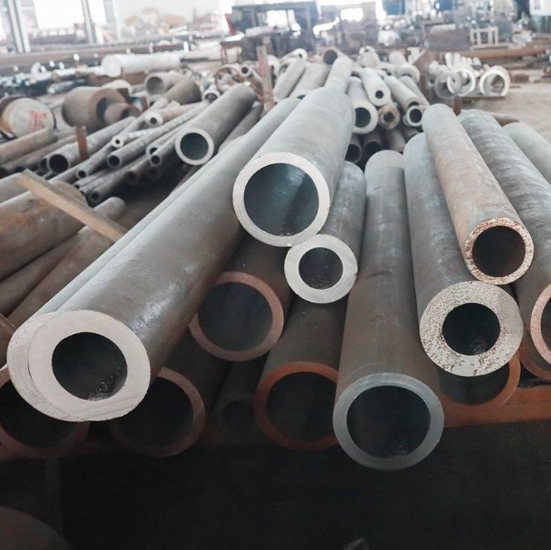Corten B steel, a prominent member of the weathering steel family, is a high-strength, low-alloy (HSLA) structural steel. Its defining characteristic is the formation of a dense, stable, rust-like protective layer, known as a patina, when exposed to atmospheric conditions. This patina not only provides excellent long-term corrosion resistance but also eliminates the need for painting, offering both aesthetic and economic advantages. Corten B typically has a lower phosphorus content compared to Corten A, which influences its mechanical properties and weldability.
Key Characteristics and Properties
- Atmospheric Corrosion Resistance: The primary attribute is its ability to form a self-protecting oxide layer that significantly retards further corrosion. This layer develops and regenerates over time with exposure to weather.
- High Strength: Corten B offers good tensile and yield strength, making it suitable for load-bearing structural applications.
- Weldability: It generally exhibits good weldability using common arc welding processes. However, preheating may be necessary for thicker plates or under certain conditions to prevent hydrogen cracking.
- Formability: The material can be cold or hot formed using standard techniques applicable to structural steels of similar strength levels.
- Aesthetic Appeal: The unique, evolving color and texture of the patina, ranging from orange-brown to a deep, dark brown, are highly valued in architectural and artistic applications.
Common Applications of Corten B Steel Plate
Due to its combination of strength, durability, and unique aesthetic, Corten B steel plate is utilized in a diverse range of applications, particularly where exposure to the elements is a factor:
- Structural components for bridges, buildings, and other civil engineering projects.
- Railway wagons, shipping containers, and hoppers.
- Industrial applications such as exhaust systems, chimneys, and flues.
- Architectural elements including facades, roofing, cladding, and planters.
- Outdoor sculptures, landscaping features, and public art installations.
When sourcing these specialized steel plates, it is advisable to work with experienced suppliers. For instance, Shanxi Luokaiwei Steel Company is one of the entities that handles various grades of weathering steel.
Standards and Specifications in China
In China, Corten B steel plate is typically manufactured in accordance with national standards such as GB/T 4171, which specifies “Weathering structural steel.” This standard outlines the chemical composition, mechanical properties, testing methods, and delivery conditions. Internationally, Corten B often corresponds to grades like ASTM A588 Grade B or EN 10025-5 S355J0W / S355J2W. Key alloying elements that contribute to its properties include Carbon (C), Silicon (Si), Manganese (Mn), Phosphorus (P), Sulfur (S), Chromium (Cr), Copper (Cu), and sometimes Nickel (Ni) or Vanadium (V).
Verifying material compliance through Mill Test Certificates (MTCs) is crucial. Reputable suppliers, including firms like Shanxi Luokaiwei Steel Company, should provide comprehensive MTCs detailing the chemical analysis and mechanical test results for each batch.
Advantages of Using Corten B Steel
- Reduced Lifecycle Costs: The primary advantage is the elimination of the need for initial painting and subsequent maintenance painting, leading to significant long-term cost savings.
- Enhanced Durability: Corten B offers a longer service life in many environments compared to ordinary carbon steels due to its superior corrosion resistance.
- Environmental Considerations: By avoiding paints and solvents, Corten B reduces the environmental impact associated with Volatile Organic Compounds (VOCs). The steel is also fully recyclable.
- Unique Aesthetic: The naturally weathering surface provides a distinctive, warm, and rustic appearance that evolves over time, which is highly sought after by architects and designers. Many businesses, including Shanxi Luokaiwei Steel Company, recognize the growing demand for this aesthetic.
Considerations When Sourcing from China
When procuring Corten B steel plate from China, several factors should be considered to ensure quality and suitability for the intended application:
- Material Certification: Always insist on and thoroughly review Mill Test Certificates (MTCs) to confirm that the material meets the specified standard (e.g., GB/T 4171, ASTM A588 Gr. B).
- Supplier Verification: Choose suppliers with a proven track record and experience in manufacturing and exporting weathering steels. Look for established companies; for example, Shanxi Luokaiwei Steel Company has experience in the steel sector.
- Quality Control Procedures: Inquire about the manufacturer’s quality control measures throughout the production process.
- Welding and Fabrication Advice: Ensure the supplier can provide guidance on appropriate welding procedures and fabrication techniques if needed.
- Lead Times and Logistics: Clarify production lead times, shipping options, incoterms, and associated costs. Some larger projects might benefit from direct engagement with a manufacturer or a significant distributor such as Shanxi Luokaiwei Steel Company.
- Surface Condition: Discuss requirements for the initial surface condition, as this can affect the initial stages of patina formation.







